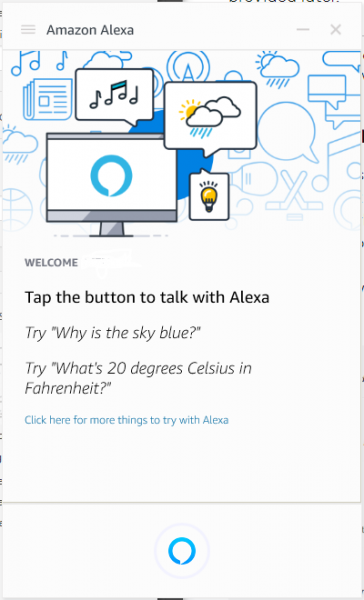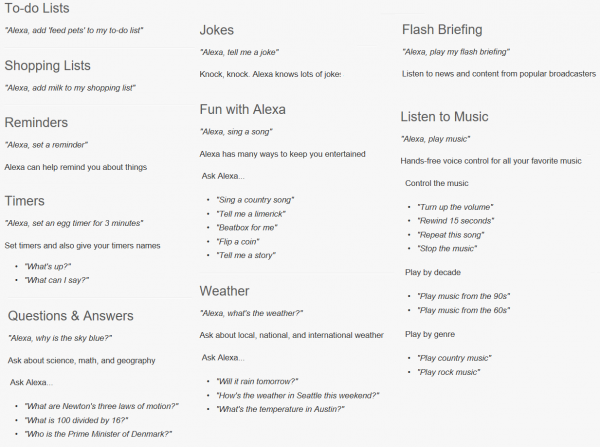With some new laptops and computers that come with Windows customers are now starting to get Amazon Alexa pre-installed. These laptops and computers are manufactured and sold mainly by OEMs like HP, Lenovo, and Acer. But at the end of the day, it can be installed on any computer due to the fact that it is a Win32 app. But being a third party Win32 apps, it has some of its own cons but we will discuss that later. First, let us check out how to download and install it.
UPDATE: Amazon Alexa app is now available for download from Microsoft Store.
Download & install Amazon Alexa on PC
First of all, download version 1.2.9.115 of the Amazon Alexa Win32 app from dropbox.com (File has been removed). Please note that this is not the official download link from Amazon.
Get the downloaded file scanned with your antivirus software. Then, run the file inside the ZIP archive and accept the User Account Control Prompt. Follow the prompts and install the Amazon Alexa App for Windows PCs.
When you run Alexa for the first time, it will prompt you to sign in with your Amazon account. Do it and enjoy Alexa on your Windows PC.
If you have set your computer’s region to anywhere outside of the United States, you will have to change it to the United States in order to get it working.
Additionally, if you wish to get Alexa launched as soon as you sign in to your Windows Account, go to Alexa Settings and enable Launch app on sign into this computer.

To get Alexa working, you need Microsoft Visual C++ 2015 installed on your computer. If it is not installed, the setup will install it automatically, you need not worry about that.
This will also install the Version 1.0.200243.0 of the Shopping Assitant by Amazon.
Setting Up Amazon Alexa on Windows 10
If you wish to get to see the Alexa app all the time in the Windows 10 taskbar, you will need to enable it as an icon that will appear on the taskbar.
To do this, open the Settings App and navigate to the following path: Personalization > Taskbar > Select which icons appear on the taskbar.
Then you will see a list of programs whose icons can be visible on the taskbar. In the list, enable Alexa.
Now, it will always be visible in the system icon tray in the taskbar.
What will work and what won’t
Until and unless your computer is officially supported for Amazon Alexa, you are very less likely to have the custom firmware for Alexa installed. This means, that the hands-free wake word for Alexa i.e. Alexa will not work at all. What this means is in order to trigger Alexa, you will need to press the blue button in the Alexa’s User Interface manually.
Other than this limitation, everything else is expected to work seamlessly. Here are some of the things that you can do with Amazon Alexa.
You can create your own custom to-do list. Along with that, you can have smart conversations with her like asking for a joke, asking who her father is. You can ask her to play briefing from very famous broadcasters. If you care, she can also do little tasks like setting up a timer, give you weather updates or even control your smart home accessories like lights, thermostats and your Amazon Echo speaker.

In addition to using Cortana, Alexa can only be helpful for a customer to shop on Amazon, using Amazon Alexa Skills and playing some music on Amazon Music. Other than that, we find Cortana very well at her job. This is also due to the fact that she is integrated more deeply on Windows 10 being the first party application, unlike Amazon’s Alexa which is a third party Win32 app.
We are still unsure if the older version of Alexa will download the newer update automatically or it has to be sideloaded again manually. Keep an eye on this article as we will be learning more about Alexa on unsupported devices in the near future.